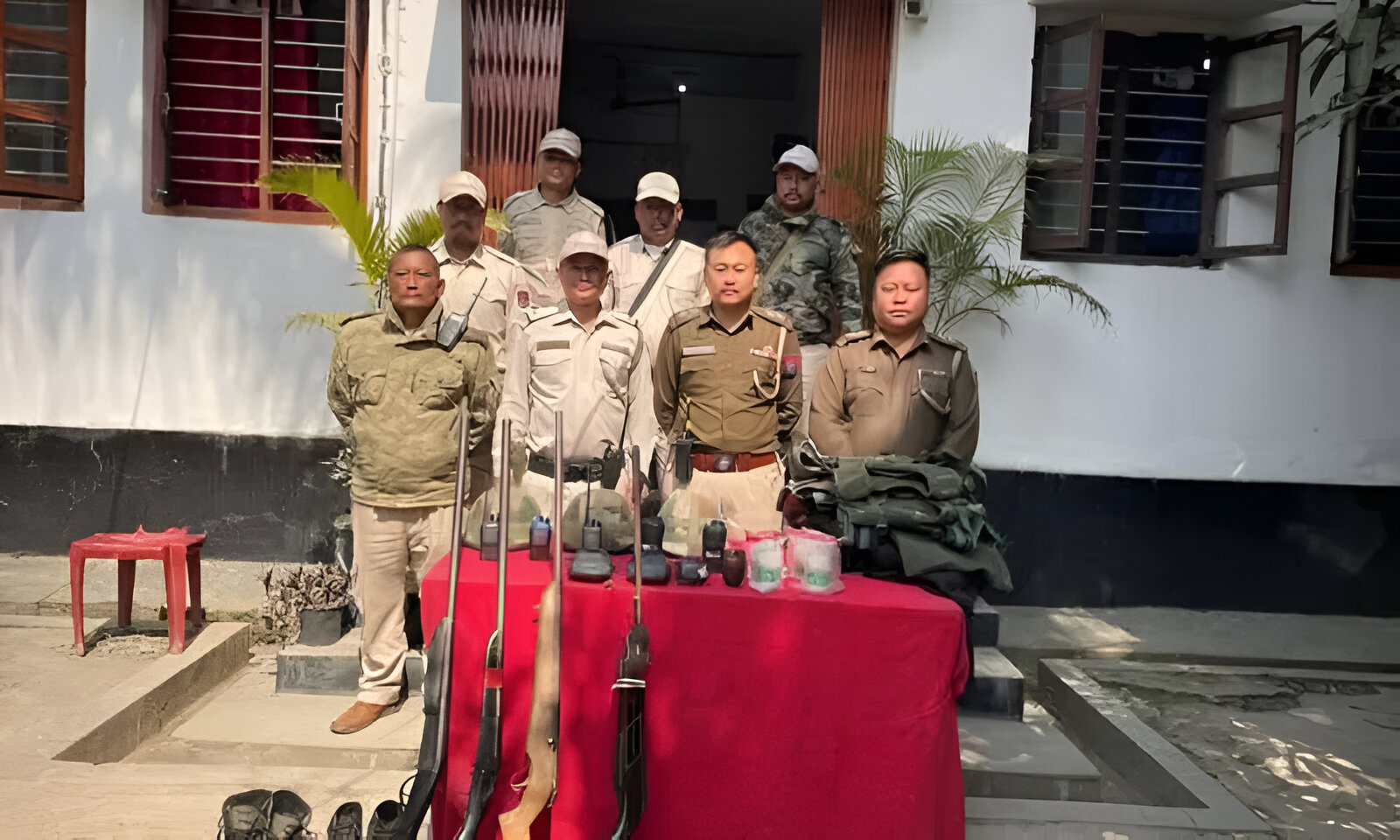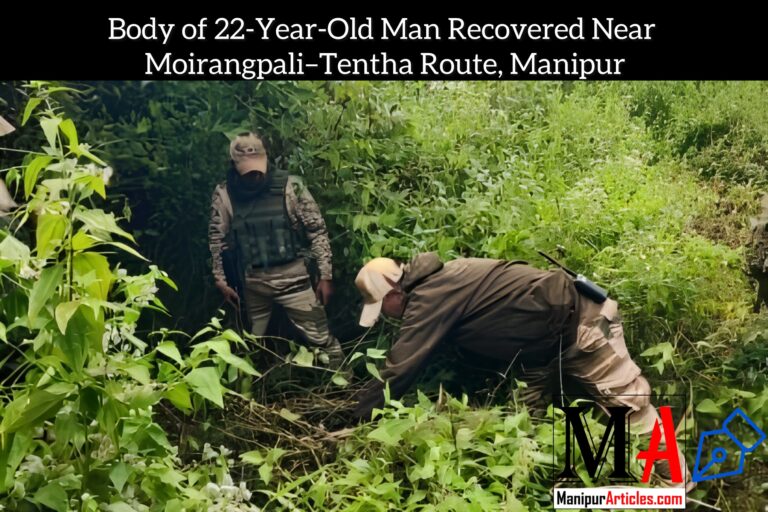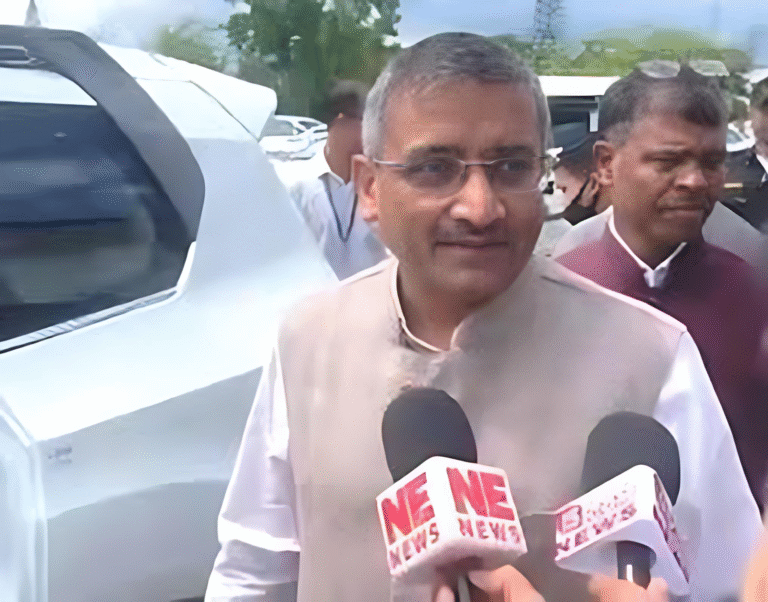Manipur: 33 Weapons Deposited Marking Governor’s Appeal 2.0 – A New Chapter in Disarmament and Community Peace
Short Summary
In a landmark development for Manipur, authorities have reported the deposit of 33 weapons in response to the Governor’s renewed appeal—dubbed “Governor’s Appeal 2.0.” This significant step towards disarmament not only underscores a firm commitment to regional peace and security but also marks a turning point in community-led efforts to curb violence. With local citizens stepping forward and security agencies working hand in hand, this initiative paves the way for a safer, more harmonious future in the region.
In-Depth Article: A Deep Dive into the Governor’s Appeal 2.0 and the Deposition of 33 Weapons in Manipur
Introduction
Have you ever witnessed a moment when a community unites to turn the tide against a longstanding issue? In Manipur, this is precisely what is happening. The recent deposit of 33 weapons, following the Governor’s renewed call—popularly known as “Governor’s Appeal 2.0”—has sparked hope and reinvigorated efforts toward disarmament and sustainable peace. Imagine a region where every deposited weapon is not just metal laid down on the table but a symbol of renewed trust, safety, and the collective will to put an end to violence. In today’s article, we’ll explore the context, significance, and far-reaching implications of this historic move, as well as the promising road ahead for Manipur.
Background and Context
To understand why the deposit of 33 weapons is a major milestone, we need to step back and look at the broader picture of disarmament efforts in Manipur. For years, the region has faced challenges related to the proliferation of arms. Whether due to insurgency, inter-community conflicts, or the spillover of violence from neighboring regions, weapons have long contributed to instability and insecurity in the area.
The previous disarmament drives had seen varying levels of participation, but often the efforts were hampered by deep-rooted mistrust and the absence of a unified call to action. Recognizing the need for a renewed, more effective approach, the Governor issued a heartfelt appeal—a call for citizens to voluntarily deposit their arms as a step toward fostering peace and unity. This appeal, now rebranded as “Governor’s Appeal 2.0,” represents not only an administrative directive but also a symbolic gesture aimed at healing the scars of past conflicts.
The Significance of 33 Weapons Deposited
So, why is the deposit of exactly 33 weapons noteworthy? Every single weapon handed over symbolizes a conscious decision by the individual to choose peace over conflict. Here’s why this number matters:
- A Symbol of Change: Each of the 33 weapons represents a surrendering of tools that once might have been used to cause harm. This collective gesture sends a powerful message: Manipur is ready to embrace a future defined by dialogue and reconciliation rather than violence.
- Catalyst for Wider Participation: The deposit of these weapons is not an end but a beginning. It sets off a ripple effect in the community, inspiring others to come forward. The visible act of disarmament encourages neighbors, local leaders, and even reluctant citizens to rethink their stance on armed possession.
- Building Trust with Security Agencies: This initiative also acts as a bridge between local communities and law enforcement agencies. It shows that the state and its citizens are aligned in their goal of reducing armed violence, thereby fostering a climate of trust and collaboration.
Imagine the deposit of each weapon as a brick in the foundation of a new, peaceful society. Over time, as more citizens join in, the collective strength of these actions can help rebuild a region marred by years of conflict.
Governor’s Appeal 2.0: What Does It Mean?
The term “Governor’s Appeal 2.0” signifies a renewed, more assertive call for disarmament. It is not just a repetition of past initiatives but an evolved strategy that incorporates lessons learned and addresses previous shortcomings. Let’s break down what this renewed appeal entails:
- Renewed Vision and Commitment: The “2.0” version of the appeal highlights the Governor’s unwavering commitment to peace and security. It indicates that past initiatives have been critically reviewed and improved upon, ensuring a more robust and inclusive approach this time around.
- Community-Centric Approach: Unlike earlier efforts that might have felt top-down, this new appeal emphasizes community participation. It is a call that resonates with the local people’s desire for safety and progress, urging them to actively contribute to a collective solution.
- Integration of Modern Communication: The appeal leverages modern communication tools and platforms to reach a broader audience. Social media, local radio, and community meetings all play a role in spreading the word and mobilizing support.
- Policy Reinforcement: Alongside the symbolic importance, the appeal is backed by concrete policy measures and incentives. These may include guarantees for the safe disposal of weapons, economic incentives for those who participate, and enhanced community policing initiatives.
Think of Governor’s Appeal 2.0 as a rallying cry that not only invites participation but also reassures citizens that their safety and contributions are valued and protected by both the state and their peers.
The Role of Security Agencies and Authorities
The deposition of these 33 weapons was made possible by the tireless efforts of security agencies working in tandem with local administration. Their role cannot be overstated:
- Strategic Planning and Execution: Security forces meticulously planned and executed operations to facilitate the safe surrender of weapons. Their preparedness is akin to a well-rehearsed dance, where every move is synchronized to ensure minimal risk and maximum impact.
- Community Engagement: Officers and local law enforcement have engaged with community leaders to build trust. By establishing open channels of communication, they have helped dispel fears and misconceptions about the disarmament process.
- Utilizing Technology: The use of modern surveillance and communication tools has greatly enhanced the efficacy of these operations. Drones, real-time monitoring systems, and secure communication networks help ensure that the process is transparent and secure.
- Ensuring Accountability: The authorities have set up stringent protocols to verify that the surrendered weapons are properly documented and disposed of. This accountability is crucial in maintaining the integrity of the process and building public confidence.
In essence, the collaboration between the state apparatus and the local community is the backbone of this initiative, ensuring that every weapon deposited is a step toward a more secure Manipur.
The Impact on Local Communities
For the residents of Manipur, the deposition of weapons carries profound implications:
- A Sense of Relief and Security: Knowing that their neighbors and local authorities are actively working to reduce the number of weapons in circulation instills a sense of security. It’s like having a trusted watchtower that keeps an eye out for potential threats.
- Economic Benefits: Reduced violence and a more stable environment encourage economic activities. When communities feel secure, businesses thrive, tourism flourishes, and local markets see a resurgence.
- Social Cohesion: Acts of disarmament serve as a unifying force. They encourage dialogue and cooperation among diverse community groups, leading to stronger social bonds and a collective identity centered around peace and progress.
- Empowerment Through Participation: By participating in disarmament, citizens feel empowered. They become active agents of change rather than passive observers of conflict. This empowerment can have a ripple effect, encouraging further community-led initiatives.
- Enhanced Trust in Governance: When citizens witness tangible actions resulting from the government’s appeals, their trust in public institutions grows. This, in turn, fosters greater civic engagement and cooperation in future initiatives.
Imagine a community where every act of depositing a weapon is like turning a page in a new chapter—one that celebrates unity, resilience, and the promise of a brighter future.
Lessons Learned from Previous Disarmament Initiatives
Every initiative, no matter how noble, comes with its set of challenges and lessons. In Manipur, previous disarmament efforts have provided valuable insights that have shaped Governor’s Appeal 2.0:
- The Need for Continuous Dialogue: Earlier drives often faltered due to a lack of sustained communication with local communities. Now, regular community meetings and feedback sessions ensure that the process remains transparent and inclusive.
- Addressing Economic Concerns: Many individuals held onto weapons because they saw no viable economic alternatives. Today’s appeal is complemented by initiatives that offer alternative livelihood opportunities, helping to alleviate financial dependencies on armed activities.
- Trust-Building Measures: Past experiences revealed that mistrust between citizens and authorities can derail even the best-intentioned initiatives. Enhanced training for security personnel and community outreach programs are now integral to the process.
- Leveraging Technology: In previous rounds, the absence of modern surveillance and communication tools limited the scope and efficiency of operations. The current approach, with its emphasis on technology, ensures greater reach and transparency.
- Cultural Sensitivity: Recognizing and respecting local customs and traditions is key. Tailoring the disarmament process to align with cultural values has increased participation and reduced resistance.
These lessons are not just historical footnotes—they serve as the guiding principles that have refined the current approach, ensuring that it is more responsive, empathetic, and effective.
Potential Future Outcomes and Policy Implications
The successful deposition of 33 weapons is just the beginning. Here are some potential outcomes and policy implications that may shape the future:
- Scaling Up Disarmament Efforts: The success of this initiative could lead to broader campaigns across the region. More citizens may be encouraged to deposit their weapons, leading to a significant reduction in the overall number of arms in circulation.
- Reforming Security Policies: The government might take this opportunity to revisit and reform existing security policies. New frameworks that promote community engagement, transparency, and accountability could emerge as a result.
- Boosting Economic and Social Development: With a reduction in violence, resources previously allocated to security and emergency responses could be redirected toward development projects—be it infrastructure, education, or healthcare. This reallocation can create a more balanced, prosperous society.
- Strengthening Local Governance: The process reinforces the importance of local leadership and community-based initiatives. It may inspire further reforms in local governance structures, making them more inclusive and participatory.
- Enhanced Cross-Sector Collaboration: The need for a unified approach to disarmament could lead to stronger collaborations between various sectors—security, social services, economic development, and cultural preservation—ensuring that efforts are holistic and sustainable.
Each of these outcomes not only benefits Manipur but could also serve as a model for other regions facing similar challenges, demonstrating that peaceful disarmament is not only possible but also transformative.
Community Response and Reactions
How have the people of Manipur responded to this renewed appeal? The community’s reaction has been a mix of cautious optimism and enthusiastic support:
- Expressions of Hope: Many locals view the deposition of weapons as a hopeful sign that change is on the horizon. This visible act of peace is celebrated in community gatherings and local media, symbolizing a collective step toward a better future.
- Calls for Further Action: While the initial success is encouraging, community leaders and residents are urging authorities to maintain momentum. They call for continued outreach, education, and economic support to ensure that the disarmament process expands.
- Public Dialogues: Town hall meetings and local forums have seen active discussions on how to further strengthen security and social cohesion. These dialogues are crucial in addressing lingering fears and ensuring that the process is inclusive.
- Mixed Reactions: Naturally, not everyone is on board immediately. Some citizens remain skeptical, citing concerns over personal security and the need for guaranteed alternative livelihoods. However, these voices are also fueling deeper conversations about how best to achieve long-term peace.
- Renewed Trust in Authorities: Overall, the visible collaboration between the government, security forces, and the community has led to a resurgence of trust. People are increasingly seeing the state as a partner in their quest for a secure and prosperous life.
This blend of optimism and constructive critique is exactly what a dynamic democracy needs to drive sustainable change.
The Role of Media and Public Awareness
Media coverage and public awareness campaigns have been pivotal in shaping the narrative around Governor’s Appeal 2.0. Here’s how the media is playing its part:
- Informative Reporting: Local and national media outlets are keeping the public informed about the progress of disarmament initiatives. Detailed reports, interviews with key stakeholders, and live updates ensure transparency.
- Social Media Campaigns: Platforms like Facebook, Twitter, and WhatsApp have become powerful tools for mobilizing public support. Hashtags, video testimonials, and interactive posts help spread the word far and wide.
- Highlighting Success Stories: Media stories focusing on individual acts of courage—like the decision to deposit a weapon—serve as inspiration for others. They transform abstract policies into relatable, human stories.
- Feedback Mechanisms: Through community feedback and online discussions, authorities can gauge public sentiment and adjust their strategies accordingly. This two-way communication strengthens the overall impact of the initiative.
- Building a Positive Narrative: In times when security issues often dominate headlines, positive stories of community cooperation and peaceful disarmament help create a balanced narrative that uplifts and unites.
Media, in this context, is more than just a conduit of information—it is an active participant in the journey toward peace.
The Path Ahead: Strengthening Disarmament Efforts
As we celebrate the milestone of depositing 33 weapons, it’s essential to look ahead and consider what further steps are necessary:
- Ongoing Community Engagement: Continued dialogue with local communities is crucial. Regular town hall meetings, feedback sessions, and cultural events can help maintain the momentum and build lasting trust.
- Expansion of Incentives: To encourage more citizens to participate, authorities might consider expanding incentives—be it financial support, vocational training, or enhanced local infrastructure.
- Monitoring and Evaluation: Establishing a robust framework to monitor disarmament progress will ensure that the initiative remains effective and transparent. Regular audits, community reports, and independent reviews can help in this regard.
- Educational Programs: Incorporating disarmament education into local school curricula and community workshops can create long-term cultural shifts toward non-violence and peace.
- Collaborative Policy-Making: Encouraging input from local leaders, security experts, and community representatives can lead to policies that are both pragmatic and reflective of the local ethos.
Each of these steps will play a critical role in ensuring that the current success evolves into a long-lasting movement for peace and security in Manipur.
Conclusion: A Milestone for Peace and Progress
The deposit of 33 weapons in response to Governor’s Appeal 2.0 marks a transformative moment in Manipur’s journey toward peace and security. It is a clear indication that when communities and authorities join forces, even the most entrenched challenges can be met head-on. This initiative is not just about disarmament—it is about rebuilding trust, fostering dialogue, and setting the stage for a future where peace is the norm rather than the exception.
As we look forward, the lessons learned from this process will guide further efforts to promote non-violence and unity across the region. With each deposited weapon, Manipur steps closer to a reality defined by safety, prosperity, and the enduring strength of community spirit.
FAQs
- What is Governor’s Appeal 2.0 and why is it significant?
Governor’s Appeal 2.0 is a renewed call for disarmament and community peace in Manipur. It invites citizens to voluntarily deposit their weapons, marking a significant step towards reducing violence and fostering trust between communities and security forces. - Why were 33 weapons deposited, and what does this number represent?
The deposit of 33 weapons symbolizes a collective commitment to choose peace over conflict. Each weapon represents an individual’s decision to contribute to a safer environment, and together, they act as a catalyst for broader community participation in disarmament. - How have local security agencies contributed to this initiative?
Security agencies played a crucial role by planning and executing coordinated operations, engaging with local communities, utilizing advanced technology, and ensuring transparency throughout the process, thereby strengthening trust and effectiveness. - What are the potential future benefits of this disarmament drive?
Beyond reducing violence, the initiative can lead to economic revitalization, enhanced social cohesion, improved trust in governance, and opportunities for sustainable development through increased community engagement and policy reforms. - How can other regions learn from Manipur’s disarmament efforts?
Manipur’s initiative demonstrates the power of community-led efforts, robust security collaboration, and a willingness to embrace modern technology and communication. These lessons can inspire similar approaches in other regions facing security challenges.




